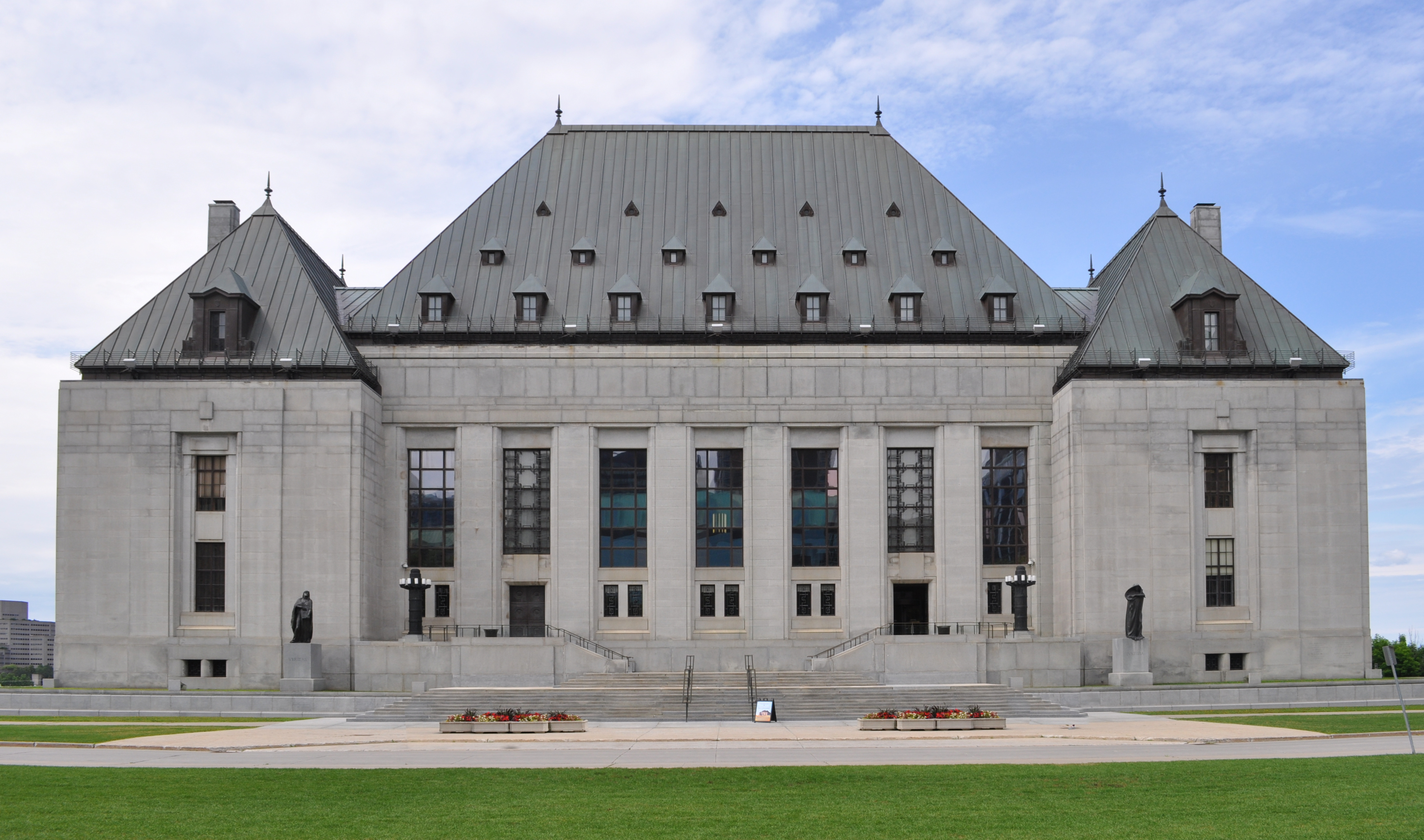|
Consumer Bankruptcy In Canada
Consumer bankruptcy in Canada is governed by the ''Bankruptcy and Insolvency Act'' ("BIA"). The legislation is complemented by regulations, as well as directives from the Office of the Superintendent of Bankruptcy that provide guidelines to trustees in bankruptcy on various aspects of the BIA. Consumer basic concepts For the purposes of the BIA, it is important to be able to distinguish between legal definition of "insolvent person" and one of "bankrupt". Generally, an insolvent person is one who cannot pay his or her debts and may subsequently become bankrupt, either by assigning himself into bankruptcy, being petitioned into bankruptcy by the creditors, or being deemed to assign himself into bankruptcy by defaulting on a Division I proposal. The person who is unable to pay his obligation is considered to be an insolvent person under the BIA. Under s. 2 of the BIA, an "insolvent person" is a person who is not bankrupt and who resides, carries on business, or has property in C ... [...More Info...] [...Related Items...] OR: [Wikipedia] [Google] [Baidu] |
Bankruptcy And Insolvency Act
The ''Bankruptcy and Insolvency Act'' (BIA; ) is one of the statutes that regulates the law on bankruptcy and insolvency in Canada. It governs bankruptcies, consumer and commercial proposals, and receiverships in Canada. It also governs the Office of the Superintendent of Bankruptcy, a federal agency responsible for ensuring that bankruptcies are administered in a fair and orderly manner. Purpose and scope The nature of the ''Act'' within Canada's legal framework governing insolvency was described by the Supreme Court of Canada in '' Century Services Inc. v. Canada (Attorney General)'': With certain exceptions, the ''Act'' covers a wide range of entities: :* it covers anyone who has resided or carried on business in Canada :* it "includes a partnership, an unincorporated association, a corporation, a cooperative society or a cooperative organization, the successors of a partnership, of an association, of a corporation, of a society or of an organization and the heirs, execu ... [...More Info...] [...Related Items...] OR: [Wikipedia] [Google] [Baidu] |
Superintendent Of Bankruptcy
The Superintendent of Bankruptcy is a Canadian government position charged to ensure that bankruptcies and insolvencies in Canada are conducted in a fair and orderly manner. References Federal departments and agencies of Canada Insolvency law of Canada {{Canada-law-stub ... [...More Info...] [...Related Items...] OR: [Wikipedia] [Google] [Baidu] |
Bankruptcy
Bankruptcy is a legal process through which people or other entities who cannot repay debts to creditors may seek relief from some or all of their debts. In most jurisdictions, bankruptcy is imposed by a court order, often initiated by the debtor. Bankrupt is not the only legal status that an insolvent person may have, meaning the term ''bankruptcy'' is not a synonym for insolvency. Etymology The word ''bankruptcy'' is derived from Italian language, Italian , literally meaning . The term is often described as having originated in Renaissance Italy, where there allegedly existed the tradition of smashing a banker's bench if he defaulted on payment. However, the existence of such a ritual is doubted. History In Ancient Greece, bankruptcy did not exist. If a man owed and he could not pay, he and his wife, children or servants were forced into "debt slavery" until the creditor recouped losses through their Manual labour, physical labour. Many city-states in ancient Greece lim ... [...More Info...] [...Related Items...] OR: [Wikipedia] [Google] [Baidu] |
Insolvency
In accounting, insolvency is the state of being unable to pay the debts, by a person or company ( debtor), at maturity; those in a state of insolvency are said to be ''insolvent''. There are two forms: cash-flow insolvency and balance-sheet insolvency. Cash-flow insolvency is when a person or company has enough assets to pay what is owed, but does not have the appropriate form of payment. For example, a person may own a large house and a valuable car, but not have enough liquid assets to pay a debt when it falls due. Cash-flow insolvency can usually be resolved by negotiation. For example, the bill collector may wait until the car is sold and the debtor agrees to pay a penalty. Balance-sheet insolvency is when a person or company does not have enough assets to pay all of their debts. The person or company might enter bankruptcy, but not necessarily. Once a loss is accepted by all parties, negotiation is often able to resolve the situation without bankruptcy. A company ... [...More Info...] [...Related Items...] OR: [Wikipedia] [Google] [Baidu] |
Debt
Debt is an obligation that requires one party, the debtor, to pay money Loan, borrowed or otherwise withheld from another party, the creditor. Debt may be owed by a sovereign state or country, local government, company, or an individual. Commercial debt is generally subject to contractual terms regarding the amount and timing of repayments of #Principal, principal and interest. Loans, bond (finance), bonds, notes, and Mortgage loan, mortgages are all types of debt. In financial accounting, debt is a type of financial transaction, as distinct from equity (finance), equity. The term can also be used metaphorically to cover morality, moral obligations and other interactions not based on a monetary value. For example, in Western cultures, a person who has been helped by a second person is sometimes said to owe a "debt of gratitude" to the second person. Etymology The English term "debt" was first used in the late 13th century and comes by way of Old French from the Latin verb ' ... [...More Info...] [...Related Items...] OR: [Wikipedia] [Google] [Baidu] |
Creditor
A creditor or lender is a party (e.g., person, organization, company, or government) that has a claim on the services of a second party. It is a person or institution to whom money is owed. The first party, in general, has provided some property or service to the second party under the assumption (usually enforced by contract) that the second party will return an equivalent property and service. The second party is frequently called a debtor or borrower. The first party is called the creditor, which is the lender of property, service, or money. Creditors can be broadly divided into two categories: secured and unsecured. *A secured creditor has a security or charge over some or all of the debtor's assets, to provide reassurance (thus to ''secure'' him) of ultimate repayment of the debt owed to him. This could be by way of, for example, a mortgage, where the property represents the security. *An unsecured creditor does not have a charge over the debtor's assets. The term cr ... [...More Info...] [...Related Items...] OR: [Wikipedia] [Google] [Baidu] |
Default (finance)
In finance, default is failure to meet the legal obligations (or conditions) of a loan, for example when a home buyer fails to make a mortgage payment, or when a corporation or government fails to pay a bond which has reached maturity. A national or sovereign default is the failure or refusal of a government to repay its national debt. The biggest private default in history is Lehman Brothers, with over $600 billion when it filed for bankruptcy in 2008 (equivalent to over $ billion in ). The biggest sovereign default is Greece, with $138 billion in March 2012 (equivalent to $ billion in ). Distinction from insolvency, illiquidity and bankruptcy The term "default" should be distinguished from the terms "insolvency", illiquidity and "bankruptcy": * Default: Debtors have been passed behind the payment deadline on a debt whose payment was due. * Illiquidity: Debtors have insufficient cash (or other "liquefiable" assets) to pay debts. * Insolvency: A legal term meani ... [...More Info...] [...Related Items...] OR: [Wikipedia] [Google] [Baidu] |
Law Of Canada
The legal system of Canada is pluralist: its foundations lie in the English common law system (inherited from its period as a colony of the British Empire), the French civil law system (inherited from its French Empire past), and Indigenous law systems developed by the various Indigenous Nations. The Constitution of Canada is the supreme law of the country, and consists of written text and unwritten conventions. The ''Constitution Act, 1867'' (known as the British North America Act prior to 1982), affirmed governance based on parliamentary precedent and divided powers between the federal and provincial governments. The Statute of Westminster 1931 granted full autonomy, and the '' Constitution Act, 1982'' ended all legislative ties to Britain, as well as adding a constitutional amending formula and the ''Canadian Charter of Rights and Freedoms''. The ''Charter'' guarantees basic rights and freedoms that usually cannot be over-ridden by any government—though a notwithstand ... [...More Info...] [...Related Items...] OR: [Wikipedia] [Google] [Baidu] |
Bankruptcy
Bankruptcy is a legal process through which people or other entities who cannot repay debts to creditors may seek relief from some or all of their debts. In most jurisdictions, bankruptcy is imposed by a court order, often initiated by the debtor. Bankrupt is not the only legal status that an insolvent person may have, meaning the term ''bankruptcy'' is not a synonym for insolvency. Etymology The word ''bankruptcy'' is derived from Italian language, Italian , literally meaning . The term is often described as having originated in Renaissance Italy, where there allegedly existed the tradition of smashing a banker's bench if he defaulted on payment. However, the existence of such a ritual is doubted. History In Ancient Greece, bankruptcy did not exist. If a man owed and he could not pay, he and his wife, children or servants were forced into "debt slavery" until the creditor recouped losses through their Manual labour, physical labour. Many city-states in ancient Greece lim ... [...More Info...] [...Related Items...] OR: [Wikipedia] [Google] [Baidu] |

